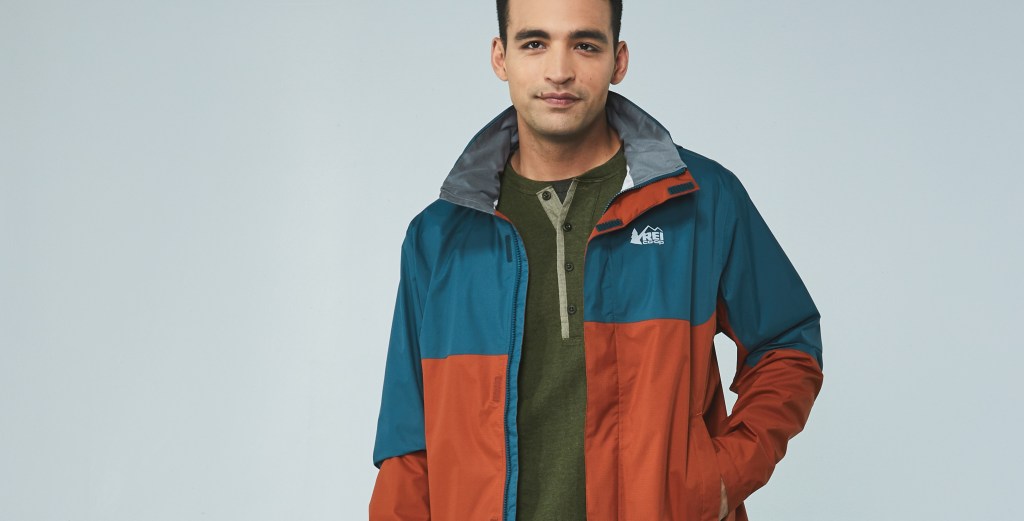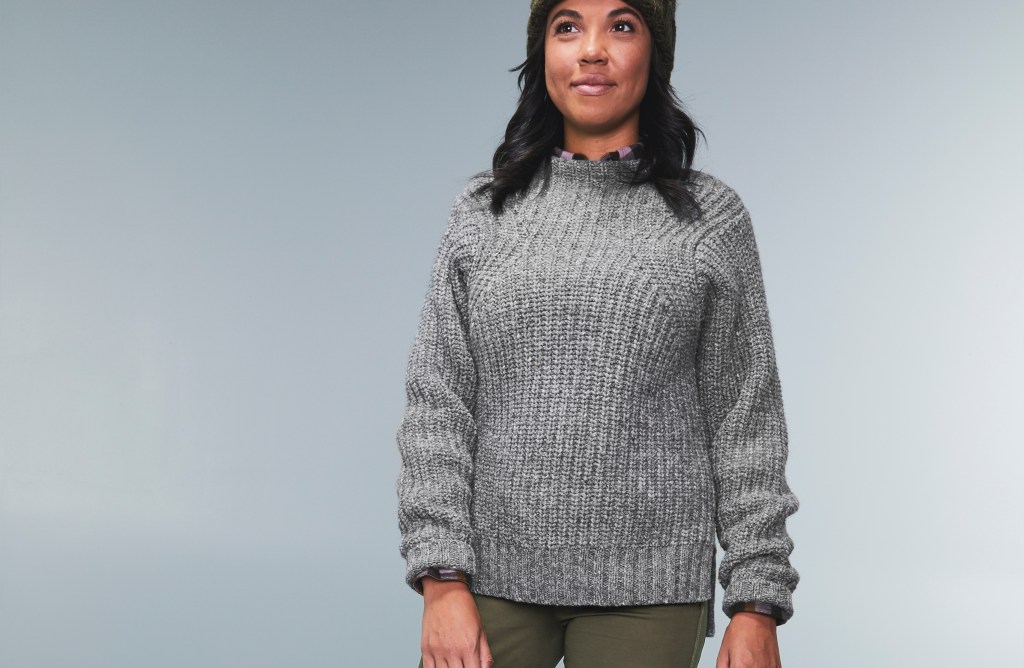When shopping for your outdoor gear, do you think about how the products you choose impact the planet? According to the data, you probably answered “yes.” In 2015, the consumer analytics company Nielsen polled 30,000 people in 60 countries across the globe and found that 66 percent of respondents were willing to pay more for sustainable brands. Among millennials, that number was nearly three out of four.
REI has long believed that to protect outdoor places it needs to incorporate sustainability into its design process. That’s why, in 2014, the co-op set a monumental goal: to transition all of the fabrics, finishes and components in REI Co-op brand gear and apparel to be 100 percent bluesign® certified by 2018. The bad news is the co-op failed to meet its goal. The good news is that it made big progress.
So just what is bluesign and how does it allow retailers to produce gear and apparel in a more sustainable way? Genna Heath, the sustainable chemistry program manager for REI, as well as Britt Berg, Ash Price and Autumn Clark, three designers for REI, shed light on the topic.
According to Heath, the term “bluesign” comes from the name of a Swiss group called bluesign® Technologies AG. Formed in 1997 to help companies create textiles with the least-possible impact on the planet, this group looks into the complex journey of materials from chemical creation to factory to finished product and sets stringent benchmarks to help companies reduce their impact.
“If you work at the very start of the chemical and textile creation process and make sure things are done right there, you’ll have a lot less pollution and downstream effects that can negatively impact people and the planet,” said Heath. “Bluesign is the world’s leading system in sustainable textile production. They holistically address potential environmental impacts of the material manufacturing process. They’ve only been around since 1997—but they’ve already managed to accomplish amazing things.”
The fact is, chemicals are the building blocks of products, from raw materials to processing agents to dyes and finishes. Misuse of chemicals can have significant and long-lasting effects on people and the environment. Establishing effective chemicals management processes means that chemicals are selected, used and disposed of responsibly throughout the process in order to mitigate negative impacts.
When REI started working toward its goal of using 100 percent bluesign-certified materials, it didn’t realize how challenging it would be. Despite unforeseen obstacles, REI has made huge progress to date: Now more than 75 percent of fabrics in REI apparel are bluesign certified. But there are gaps in the bluesign system, certain finishes and accessory components—like prints, zippers, pulls and closures—are harder to find from bluesign certified manufacturers. “We set out with a goal to be 100 percent bluesign this year,” Heath said. “We went into that knowing we would run into challenges—but knowing it was the right thing to do.”
The co-op has made progress, even with these difficulties. Here are three products that highlight some of the struggles and successes involved in creating bluesign-certified products:
Rainier Rain Jacket: Women’s & Men’s

Waterproof, breathable and windproof, the REI Co-op Rainier Rain Jacket offers everything you need in order to get outside and play in wicked weather. And it’s one of the products REI is most proud of in its quest for 100% bluesign certification.
Since introducing the Rainier style in March 2018, REI has sold more than 91,000 of these rain jackets and rain pants (the co-op sells more than 1,000 Rainier jackets a week), said Britt Berg, REI product designer. Each chemical used to create the Rainier’s performance fabrics is bluesign certified, from the dyes to the water repellent finish. Using bluesign-certified fabrics for one of REI’s most popular styles means that it is keeping a lot of potential chemicals of concern out of our environment and protecting the people who work in the factories and touch it in retail stores.
The Rainier jacket is also made of recycled materials—in fact, nearly fifty percent of the fabric in the entire product is recycled by yardage. “It gives me a little thrill every time we can make something out of recycled materials,” Berg said. “It’s having not only one life but a second or third life. How amazing is that in a jacket you get to wear backpacking?”
As for the future, REI is looking into making the jacket fully bluesign certified by increasing use of bluesign-certified components. This jacket features over 20 different accessory components, many of which currently aren’t bluesign certified. REI is pushing its factories to help create an entirely bluesign-certified product.
Flash 18 Pack

Handy whether in town or on hikes away from basecamp, the Flash 18 Pack is made to get out there. This was one of REI’s first pieces of gear made with 100 percent bluesign-certified fabrics.
One problem designers ran into with the 2018 Flash 18 pack was the graphic printed finish. The inks to make these unique prints are not bluesign certified, so REI conducted extensive testing to ensure these finishes meet the co-op’s high bar for chemical compliance in the absence of the bluesign available options.
The difficulties don’t stop with finishes and components. “Choosing bluesign fabrics kind of limits who we are able to work with,” said Ash Price, senior product designer for REI. “Sometimes we see a unique-looking fabric and either the vendor isn’t bluesign or one of the processes they use to make the fabric look so cool isn’t bluesign approved. It also makes all the materials we are choosing a little more expensive than average material.”
As with the Rainier jacket, REI is working toward its goal of producing the Flash 18 pack with 100 percent bluesign-certified finishes and components, as well as fabric. It’s tough, but it’s something the co-op believes in.
Wallace Lake Sweater: Women’s & Men’s

Unlike the Rainier Rain Jacket and Flash 18 Pack, the Wallace Lake Sweater is made from fabrics that aren’t bluesign certified. This sweater highlights a different challenge in reaching the 100 percent bluesign goal.
There are limited options for bluesign-certified machine-washable wool. It’s an amazing material for both sustainability and performance, but being able to wash wool products without excessive shrinking is important. Due to a lack of bluesign-certified machine-washable wool, REI designers work closely with a small supply chain of trusted suppliers to make sure the wool they use feels good, looks good, stands up to laundering and meets the co-op’s high standards for chemistry—as well as coming from sheep that are treated well.
REI is always working with suppliers to make better, more responsible products. “Our materials team knows that when we sign on a new vendor, we are pushing for bluesign as a company,” said Autumn Clark, senior product designer. When REI does decide to work with a non-bluesign certified partner, the co-op takes extra steps to make sure its expectations for chemicals management and performance are met.
The Future
“Our vision is to not just unite the entire industry around safer chemistry, but to improve our entire footprint,” said Kevin Myette, director of global brand services at bluesign. “Because when you use less chemistry you use less water, and when you use less water you use less energy, and when you use less energy you have a smaller carbon footprint.”
The co-op is committed to pursuing 100 percent bluesign-certified products in the future. In the meantime, REI continues to enhance its own sustainable chemistry program and collaborate with brand partners to learn from them and share learnings.
“The REI Co-op brand has done an amazing job of addressing the challenges and elevating the game of private brands on this issue,” Myette said. “Now REI is turning toward other brands it sells and asking, ‘What are you doing?’ There are lots of brands that are part of the REI portfolio that are still just figuring this out.”
“At the end of the day, our customers want awesome products that they feel good about bringing into their homes and the outdoors,” Heath said. “Choosing products made with bluesign-certified materials is an easy step consumers can take to feel good about what they buy while also supporting a bigger movement towards cleaner textile manufacturing around the globe.”


